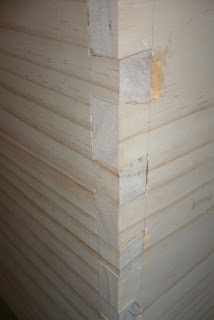What is a Solar Wax Melter?!
Over the past few weeks I've been working on my version of a solar wax melter. A wax melter is a tool used by apiarists (beekeepers) to clean to old wax/honey off wooden frames. Essentially, the frame is placed within a wooden box and the temperature increased to the wax's melting point (~50-60 degrees) at which point it melts off into a collection point below. With a glass top and black sides a solar wax melter uses the sun's energy to achieve the desired temperatures.Designs
There are various designs available on the internet from a simple foam box with a second hand window frame resting on it to more complex stainless steel models. The limitations of most of these designs however is that they hold only a single frame a time. The design brief for this project outlined the need to hold eight frames, that is an entire box.
My Design
After a few sketches and discussions we came up with this design. The eight frames are arranged on steps at ~30 degrees. (The angle is to allow for maximum sun exposure throughout the day.) Although the vertical design would limit the direct exposure of the frame to the sun the temperature within the box will still achieve desired melting temperature.
This sketchup design only includes the top half. The box is to be extended below to include 1 or 2 filters, the collecting tray, and a back door to allow the access to the tray and filters.
 (Design by Bee Source) |
(Designs by Dadant)
(Design by Envrotom)
My Design
After a few sketches and discussions we came up with this design. The eight frames are arranged on steps at ~30 degrees. (The angle is to allow for maximum sun exposure throughout the day.) Although the vertical design would limit the direct exposure of the frame to the sun the temperature within the box will still achieve desired melting temperature.
This sketchup design only includes the top half. The box is to be extended below to include 1 or 2 filters, the collecting tray, and a back door to allow the access to the tray and filters.

































































.png)